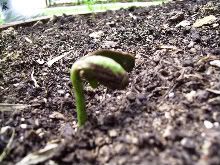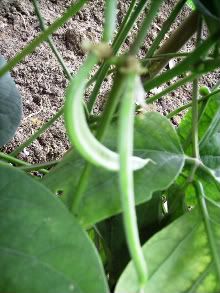Observe Porcupin.
Porcupin is a caterpillar found in the school carpark.
What physical adaptations help Porcupin in evading predators?
Besides physical adaptations, how else do caterpillars behave in order to survive?
How To Soar in PSLE - BTPS Way!!
Interact with complex questions / graphs / pictures to pick up valuable clues (don't highlight - just use your pen to underline words or scribble notes)
Start with Booklet A and do it meticulously with full focus - explore all 4 distractors before making final choice.
MANAGE your TIME - to score well, you need to try to finish ALL questions.
Specific answers = answers that are relevant to question.
When confused, choose any of the following strategies:
1. Ask, "What Science idea is being used in question?"
2. Pose other questions to clarify your thoughts
3. COMPARE to another set-up
4. COMPARE to a reverse situation
5. Connect to your knowledge in life (yes, you do have lots of prior / other knowledge)
6. Break down your answer in steps before crafting final answer.
Common problems with wrong answers:
*Answers are generic/vague and do not connect to that specific question
*Answers are not scientific and do not explain using Science ideas
*Answers do not make use of data provided when asked
*Answers did not make comparisons - use words like more/most etc..when asked
BTPS supports all P6 in achieving their PSLE GOALS!!
Start with Booklet A and do it meticulously with full focus - explore all 4 distractors before making final choice.
MANAGE your TIME - to score well, you need to try to finish ALL questions.
Specific answers = answers that are relevant to question.
When confused, choose any of the following strategies:
1. Ask, "What Science idea is being used in question?"
2. Pose other questions to clarify your thoughts
3. COMPARE to another set-up
4. COMPARE to a reverse situation
5. Connect to your knowledge in life (yes, you do have lots of prior / other knowledge)
6. Break down your answer in steps before crafting final answer.
Common problems with wrong answers:
*Answers are generic/vague and do not connect to that specific question
*Answers are not scientific and do not explain using Science ideas
*Answers do not make use of data provided when asked
*Answers did not make comparisons - use words like more/most etc..when asked
BTPS supports all P6 in achieving their PSLE GOALS!!
Wednesday, March 11, 2009
Subscribe to:
Post Comments (Atom)
Science Around Me (SAM)
SAM is a Science journal that allows pupils to express themselves in their favourite ways about Science.
SAM is another great opportunity for pupils to THINK and TALK Science in a medium that is customised to their learning styles.
SAM allows teachers to informally assess understanding of the child and clarify misconceptions in their learning.
SAM is another great opportunity for pupils to THINK and TALK Science in a medium that is customised to their learning styles.
SAM allows teachers to informally assess understanding of the child and clarify misconceptions in their learning.
Factors Affecting the Environment by Gog Ru Yan - 6G

When Ice Changes into Water by Goh Chee Yan - 5G
Do you wonder whether the mass of ice changes when it melts into water. Try this out:
1. Put a few ice cubes into a plastic bag
2. Tie the mouth of the bag tightly
3. Weigh the bag of ice cubes (if there is condensation outside the bag, wipe it dry before weighing)
4. Place the bag in the sun
5. When ice has melted, wipe the outside of the bag dry (refer to step 3)
6. Weigh the bag
You will discover that the mass of the bag remains the same!
There is no change in mass when ice melts!!
1. Put a few ice cubes into a plastic bag
2. Tie the mouth of the bag tightly
3. Weigh the bag of ice cubes (if there is condensation outside the bag, wipe it dry before weighing)
4. Place the bag in the sun
5. When ice has melted, wipe the outside of the bag dry (refer to step 3)
6. Weigh the bag
You will discover that the mass of the bag remains the same!
There is no change in mass when ice melts!!
Simple Steps to fight Dengue by Elizabeth Wu 4C







32 comments:
Porcupin has spikes on its back to prevent its enemies from attacking it. Most caterpillars have a greenish colour on their skin to blend with the leaves. Some of the caterpillars are brownish in colour.
Porcupin has spiny bristles that will irritate predators by lodging in the skin or mucous membranes. Porcupin can use camouflage to avoid detection by being the same colour as the plants where it lives.
TSW
Probably, it will curl up when attack as the spike will definately show its "ferociosness" of its spike. In this case, it will look like a less tempting prey to eat. ( Think about swallowing a needle.) It may also show of its spike as it does mean 'Dont Come Near Me, I can hurt you!' Since it eats leaves (Its a caterpillar) it does not need to have a method of ambush though it may want to blend with the leaves with its body colour.
Pek Yu-Xuan Sean
Porcupin has spikes on their back this is Probably use to warm predators away or scare them and they are usually green, so they hide in the leaves when they sense danger.
it would curl up and use its spikes to fend itself from predators
1. A porcupin's skin colour blends with the leaves so that predators cannot see it.
Youn Yea Won (6C)
Wow! I agree with Sean's opinion. It has a lot of tiny spikes and is green in colour. I had goose bumps on my skin when looking at those spikes! If you were its predator, would you want to eat that kind of organism which is covered with spikes which looks very sharp and look like needles gathered? If I were it, I wouldn't eat it! And another point that it is green in colour, caterpillar kinds usually eat leaves and leaves are green in colour because they have chlorophyll. And because of their colour, they blend with the colour of the leaves and their legs are even green in colour if you observe carefully!
-Their another feature that I think they might have is that they will curl up when seeing its predator. If you see the porcupin carefully, it does not have any spikes underside of it which I think is because it has to crawl, you know. And what if its predator attacks from below? It will get killed so easily. Therefore, I think it will curl up itself to lessen the chance of death.
(Just my opinion. Sorry for in case of wrong information^^=)
-What physical adaptations help Porcupin in evading predators?
Porcupin has spikes in order to prevent its predators from attacking it and its body colour blends with the leaves and would probably hide in the leaves upon sensing something.
YX
i think that it woud reveal a pair of feelers or curl itself and reveal all its spikes to scare. another reason i thought that the porcupin was it will camoflague with the leaves as it blends with the colour green.
Farid 5C :)
The porcupin uses its spines to protect itself from predators. They would curl up when predators are near and they use their green colour to camouflage.
Porcupins have spikes that prevent preditors from attacking it .It is green in colour to cameflage with the leaves .
the caterpillar has a fake eye on it back(the black dot) to mislead its prey that that that is its eye and it has spike like structures so that its predators will think again before trying to attack or eat it and lastly it is green in colour to blend with its surroundings(leaves)
kay kiat
Yea Won, the common habits of these spiny caterpillar do curl up. These spikes actually work like deterents, so this is the best way to sctually utilise these spikes. (Like I said, imagining a needle down your throat0
Kay Kait, I believe your idea of a fake eye is possible, in fact fishes do it too!
Pek Yu-Xuan Sean
1.The Porcupin caterpillar has spikes on its back to protect itself from the predators.It has a lot of tiny spikes and is green in colour.
2.Most caterpillars eat leaves. So I think that the caterpillar also blend itself with leaves to avoid being noticed and hence, higher chance of surviving.
3.Talking about caterpillars, some caterpillars roll themselves up.
BUT i don't think that will happen to the Porcupin caterpillar.
"Their another feature that I think they might have is that they will curl up when seeing its predator. If you see the porcupin carefully, it does not have any spikes underside of it which I think is because it has to crawl, you know." by Ellia. I had doubts with this comment.
MAYBE they do not have any spikes underside of it because they need it to crawl, not curl up. I researched on it and found out this.
"If one touches it, the hairs run into the pores of the skin, and remain there, giving sharp pricks.:
SO THIS IS 100% CLEAR THAT THE CATERPILLAR USES ITS SPIKES TO DEFEND.
Coming back to the question, I just don't think it will curl up. Maybe my mindset is too small (HAHA) or maybe I just can't accept the fact. Ellia also said " And what if its predator attacks from below? It will get killed so easily. "
How can the predator attack from below? It is at the ground level most of the time. The predator is not underground because I think the predator is the bird. So the caterpillar need not ned to curl up because the predator is not under the ground.
MARCUS CHIOH 6G
- Porcupin can evade its predators by blending in as its colour is green. It can blend into the leaves or grass.
- Its spiky outer covering helps to attack predators. Predators get pricked by its spiky outering.
And regarding to what Marcus said- "How can the predator attack from below? It is at the ground level most of the time."
you said that it is at ground level MOST OF THE TIME. Like what you said, It IS at ground level most of the time, but you said MOST OF THE TIME... not ALL OF THE TIME. So predators can still attack from below... unless you meant that the underside of Porcupin (which has no spikes) is always faced to the ground.
Megan, 6faith
MEGAN!!! never mind."you said that it is at ground level MOST OF THE TIME. Like what you said, It IS at ground level most of the time, but you said MOST OF THE TIME... not ALL OF THE TIME. So predators can still attack from below... unless you meant that the underside of Porcupin (which has no spikes) is always faced to the ground."
The underside of the Porcupin is always facing the bottom unless the Porcupin turns around. And even though the Porcupin is on the leaves, the predator still cannot attack from below. I mean, how can the predator poke through the leaves and attack it. So think before you comment. I did not mean that you give a wrong comment but please read through and understand my comment. Thank You
MARCUS CHIOH 6G
1. i know catterpillars normmaly stay on trees more so any preadators on land cant attack them.
2. and the spikes if they think the item or thing is a preadator it will curl or lean up as if they were very dangerous.
3. as well as camoflouge would protect them in the trees as they would blemd in and preadators in the air would less likely catch them
calvin ho
Marcus, what you said is not entirely true. "I mean, how can the predator poke through the leaves and attack it."
A predator can still poke through the leaves depending on what type it is. Please elaborate more if you want to say that. (no offense though^^)
-Megan, 6F
WAIT, MEGAN, think!
What's a caterpillar's predator?
BIRD
So the bird is bigger than the leaves of trees. So when the bird is flying down, the caterpillar sure can realise that the bird is very near to him and can sense danger, the caterpillar will therefore go inside the tree. So the bird cannot eat the caterpillar.
Porcupin has spikes to prevent predators from eating them.I observed that porcupin does not hide under the leaves. It likes to explore around like it is not afraid of danger.The colour of Porcupin can blend with the leaves of a plant so it can avoid being seen by the predators .
lydia,6grace
They can camouflage to avoid being eaten up by the predators.Porcupin also have spikes to make the predators scared of it.
1. Hairy thorns on its body.
2. When threatened, it will puff out its hairy thorns.
~Nicholas King(6C)
Nicolas, what do you mind by puff off? Is it blow?
MARCUS CHIOH 6G
Marcus,I think he meant shoot out its thorns.
The porcupine caterpillar has spikes on its two ends and sides.The upper part or back of it is light green which camouflages it in leaves.It has a spot on its upper part or back which somehow resembles an eye.When the predator,which is a bird,sees the spot on its upper part or back would think that is not a caterpillar at all and if the bird does discover that it is a caterpillar,it would not go near it as the porcupine caterpillar has spikes for its defense.
Basically,the porcupine caterpillar has a high chance of survival.
Please comment on my comment(HA HA)
JOHN CARLO SONGCUAN of 6Grace
(I think carlo's comment is good, but how do you know that the bird will think that the spot is not a caterpillar, maybe when the bird see the spot, it knows it is a caterpillar but when it flies down, it saw the spikes so the bird will not eat it.
MARCUS CHIOH
porcupines have very sharp thorns to defends themselves from predators and porcupine caterpillars are green in colour to blend in withthe leaves
porcupin has sharp spikes to prevent it from being eaten by enemies
its colour help porcupin to camoufalge itself form being seen by predators and who would want to eat a catepillar full of needles?
sally 6g
porcupin uses its spikes toscre off the predators.it makes them back off and leave it alone it hides at the underside of the leaves to prevent predators from seeing it.
Yan ting(6G)
Can anyone tell me where can i find a porcupin caterpillar?But i found a site that has some information of a porcupine caterpillar,you might want to take a look...(sry if i gave any wrong information,i'm just curious.)~audrey 6grace
http://www.parks-sa.co.za/forums/viewtopic.php?f=68&t=23594&start=0&st=0&sk=t&sd=a&view=print
The porcupin have spikes to make itself look bigger, thus the predator would be afraid of it.
Caterpillars hide on the underside of a leaf so as to prevent being seen by predators. Most caterpillars have green body covering so as to blend in with the leaves to prevent being seen.
Ben Wu,
6 Grace
Post a Comment